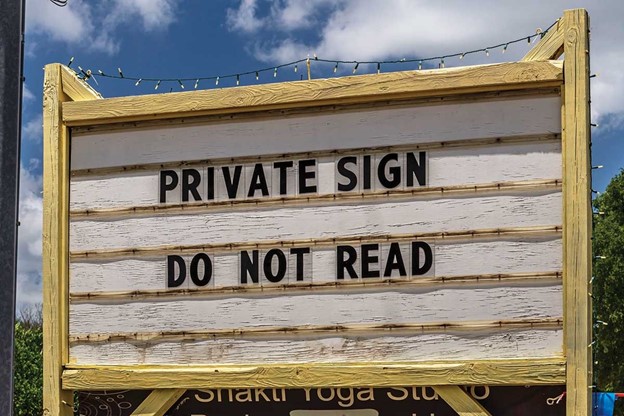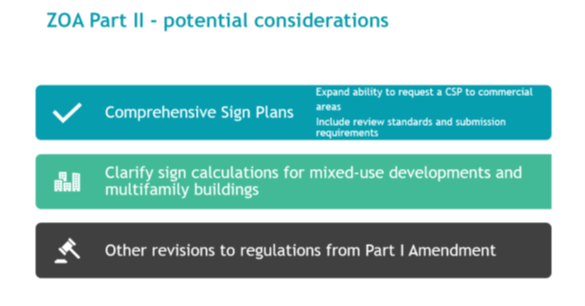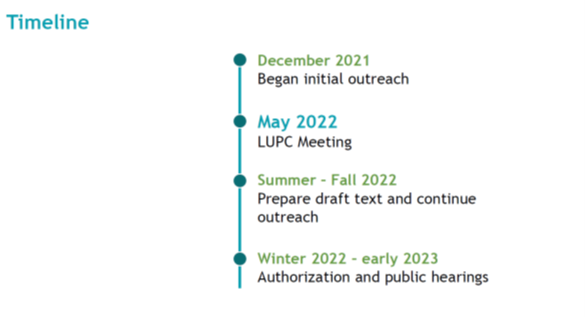Whether you are demonstrating your support for your favorite political candidate, sharing the day’s specials at your restaurant, or showcasing the location of a major office tenant, you’re undoubtedly using signage to get people’s attention. The who, where, when, and what of signage is strictly regulated. In Fairfax County, adding or modifying existing signs beyond what is permitted by-right can be daunting. The existing ordinance involves confusing calculations and often requires applicants to show unwarranted hardship. Staff at Fairfax County Planning and Development are exploring a zoning amendment which may simplify and streamline the process.
Currently, the three avenues for adding or modifying existing signage include: through a Comprehensive Sign Plan (CSP), a Special Exception (SE), and a Special Permit (SP). A CSP specifies the location, size materials, lighting, and design of all existing and proposed signage. A CSP is only available in a Planned Development Zoning District (P District) and has more flexible requirements than a conventional zoning district. An SE can allow for additional or modified signage for properties in Commercial or Industrial Zoning Districts, but first requires that the applicant demonstrate “unusual circumstances or conditions” that impact the applicant’s ability to provide “for reasonable identification of the use.” An SP can increase the height or sign area of a freestanding or building-mounted sign for a shopping center when the applicant demonstrates “hardship due to topography.”
Fairfax County staff is proposing an amendment that would consolidate the CSP, SE, and SP processes for increased signage into one request type. This new Comprehensive Sign Plan process would be available for all P Districts and all nonresidential conventional zoning districts. This singular process would then go to the Planning Commission for approval. Staff has also proposed new review standard language that would take into consideration the “height and size of the sign in relation to the building and surrounding development, locational guidelines…as well as consideration of unique site characteristics.” Staff will also be examining sign area calculations for mixed use and multifamily districts. They hope to review any allowances and clarify any regulations which have been notoriously unclear.
When pressed, the only downside staff sees would be the influx in applications. Giving businesses and property owners a more flexible approach to adding or modifying signage may encourage a greater volume and variety of applications. County staff are currently in the “Drafting & Continue Outreach” phase of the amendment. It is expected that some version of the amendment could be ready for authorization in early 2023.
The land use team at Bean Kinney & Korman will closely watch as the amendment progresses. As always, please contact us with any questions about the Fairfax County signage or any other land use matters.
This article is for informational purposes only and does not contain or convey legal advice. Consult a lawyer. Any views or opinions expressed herein are those of the author and are not necessarily the views of any client.



